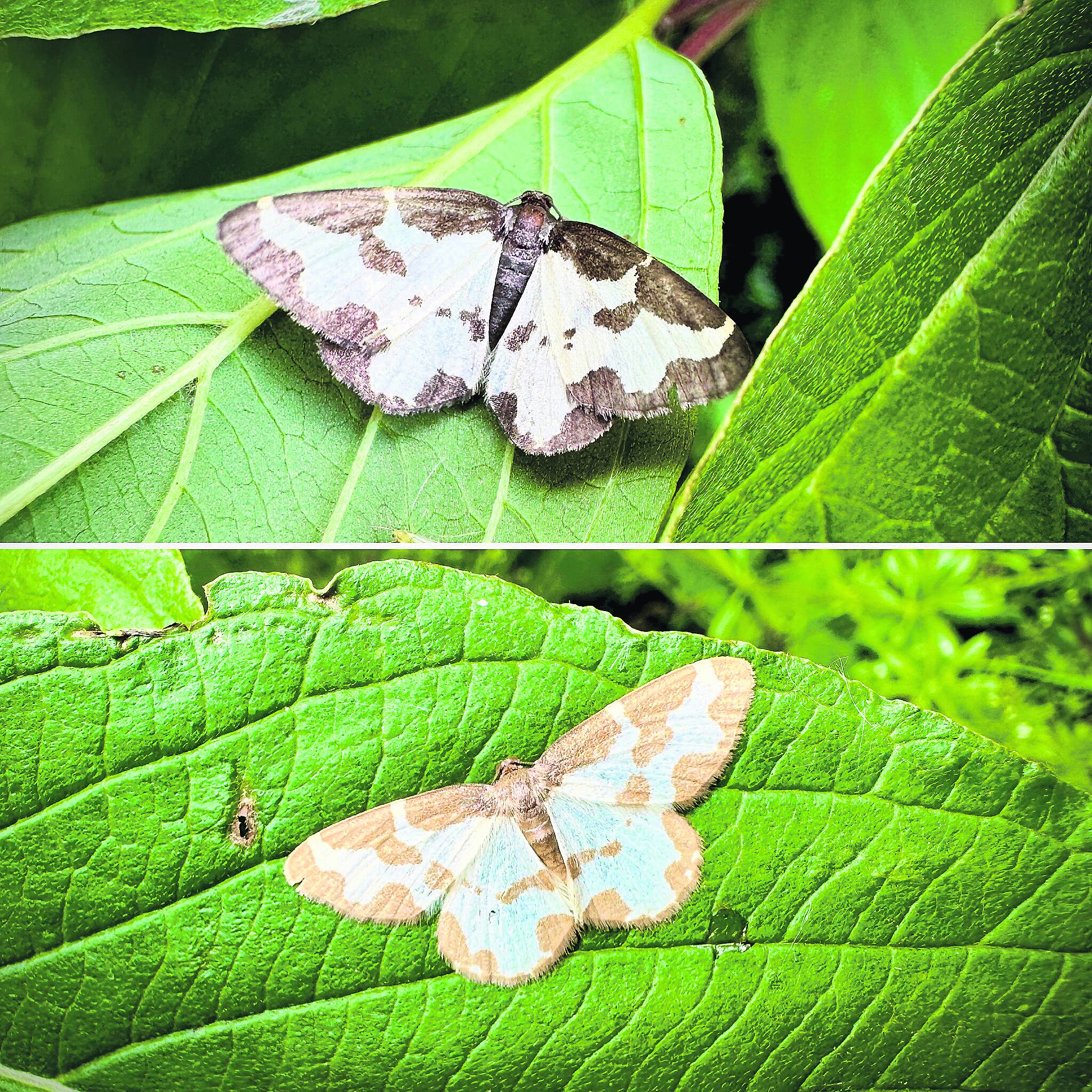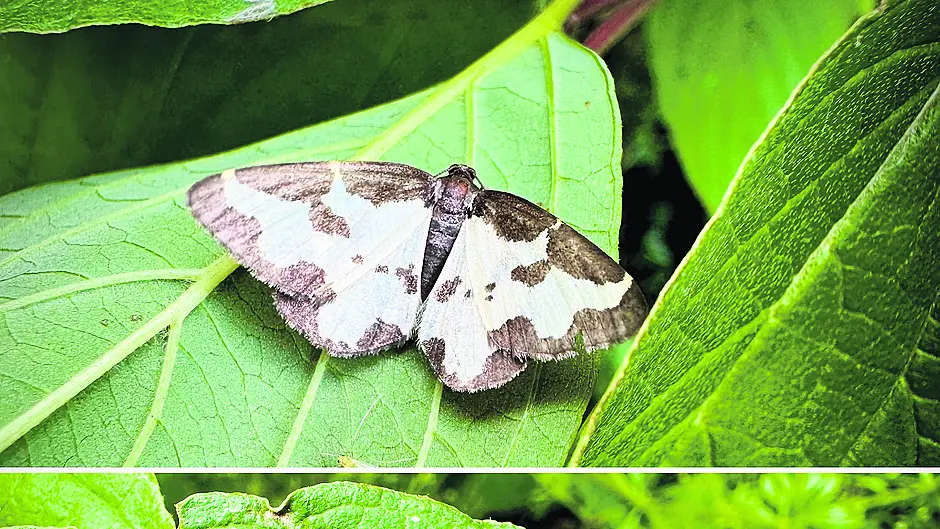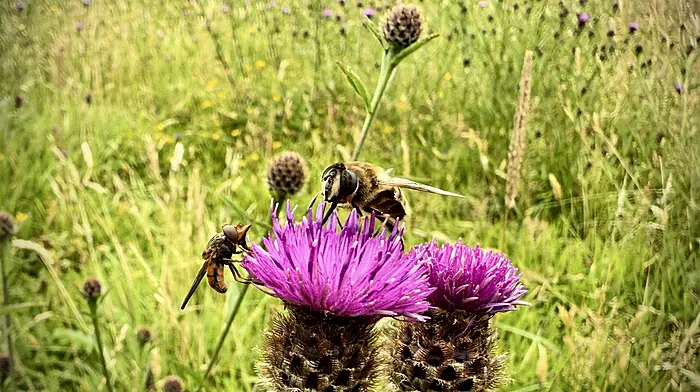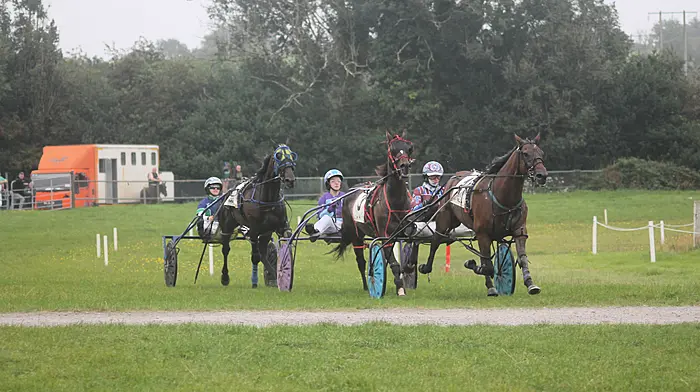
My primary school-aged son participated in a football blitz in Macroom on a recent weekend morning.
As we don’t visit the town as often as we’d like, it was the perfect chance to turn the trip into a family outing focused on nature spotting after the sports event.
Never mind the gumshield, water bottle, and football boots; wellies, binoculars, cameras, identification guides, and the trusty magnifying hand lens were all packed into the car before we set off.
Riverside pitch
The first stop was, of course, the blitz. The games went well, and Tom Creedon Park was lovely. The playing fields are bordered by trees and hedgerows bursting with flowers and life, and they lie alongside the Sullane River, a tributary of the Lee. A public walking path loops around the park, making it well worth a visit, especially at this time of year. Across the river lies Macroom Golf Club, and we had been alerted through a birding WhatsApp group that a great spotted woodpecker had been heard near there during the park run that morning.
After the blitz, we walked the path with keen ears, listening for the woodpecker’s call or their distinctive drumming as they pecked energetically at trees. We had no luck with the woodpecker, but there was plenty to catch our attention: hoverflies, bees, shieldbugs, and ladybirds visiting flowers and leaves of the alder and sycamore trees lining the walkway.
Wildlife haven
Our second stop was the Gearagh. We couldn’t visit Macroom without exploring it. The Gearagh is an area where the River Lee breaks into a complex network of channels and weaves its way through wooded islands. Sadly, it used to be more extensive than it is today. In 1954 and 1955, the eastern part was cleared and flooded during the construction of two hydroelectric dams, resulting in the loss of around 60% of the woodland.
However, the remaining alluvial forest is of exceptional value, and supports a rich diversity of trees, plants, and invertebrates, making it a haven for various terrestrial and aquatic species.
Though still owned by the ESB, the Gearagh has been a designated nature reserve since 1987. There have been calls to make it Cork’s first national park due to its rare and valuable habitat. It is already afforded legal protection as a Special Area of Conservation (SAC), a Special Protected Area (SPA), and a Ramsar site (a wetland designated to be of international importance). Notably, the Gearagh provides a vital home for otters, as well as numerous waterbirds.

Family time
When visiting the Gearagh at this time of year, you can keep an eye out for birds such as kingfishers, little grebes, great crested grebes, swallows, swifts, and sand martins. You may even be lucky enough to spot rarities like great white egrets, cranes, or those elusive great spotted woodpeckers, which are occasionally reported there.
We were delighted to witness the endearing sight of a great crested grebe family, with the female carrying two chicks on her back. Great crested grebes are sleek waterbirds with a long neck, a fancy feathered crest and colourful ruff-like feathers around their face. They are well known for their beautiful courtship dance. While they are resident across Ireland all year round, most breeding tends to take place in the northern half of the country, so it was a real privilege to see them with chicks in West Cork.
Valuable plants
Much of the important wildlife habitat in the Gearagh is inaccessible to people, yet we were still treated to a range of thriving plant life along the public walkway. The path was lined with wildflowers such as ragged robin, herb robert, hogweed, pignut, meadowsweet, dandelions, and red and white clover. With the wildflowers in bloom and the trees in full leaf, it was a lush and colourful feast for the senses, the overall impression being one of rich, vibrant green. It was a delight to walk along identifying trees where we could. Alder, hazel, sycamore, hawthorn, and willows were the most frequent. One shrub that looked slightly out of place and which we spotted a few times, was the non-native red osier dogwood, from North America. It is often planted in areas prone to waterlogging as it tolerates such conditions well. Spreading by layering it can take over in wet areas, so it is one to watch in a place like the Gearagh, which is home to so many valuable native plants.
Invertebrate drama
The Gearagh is always a lovely spot for observing insects, known for its dragonflies and damselflies. The moth star of the day was the clouded border, which comes in black and white or gold and white. We found many resting under leaves, waiting to be discovered. It's always worth checking the underside of leaves as you walk along, as you never know what you might find. This way, we also spotted plenty of 7-, 10-, and 14-spot ladybirds, vital for controlling aphids like greenfly in the wild and in our gardens.
The most dramatic moment was watching a flower crab spider lose its dungfly prey to a wasp. These spiders do not spin webs but wait motionless on flowers, forelegs poised to snatch visiting insects. They inject venom to subdue their catch, though they are harmless to humans. Named for their crab-like movements, they can walk in all directions and even change colour to match the flower they are on. Varying between white, yellow, and greenish shades, they are well camouflaged to both prey and predators. The one we spotted was on hogweed with a dungfly in its grasp, only for a wasp to swoop in and steal it to feed their larvae.
The drama and excitement of nature never fail to thrill. With the school holidays fast approaching, I look forward to many more nature-spotting days out in West Cork. There is no better place.









